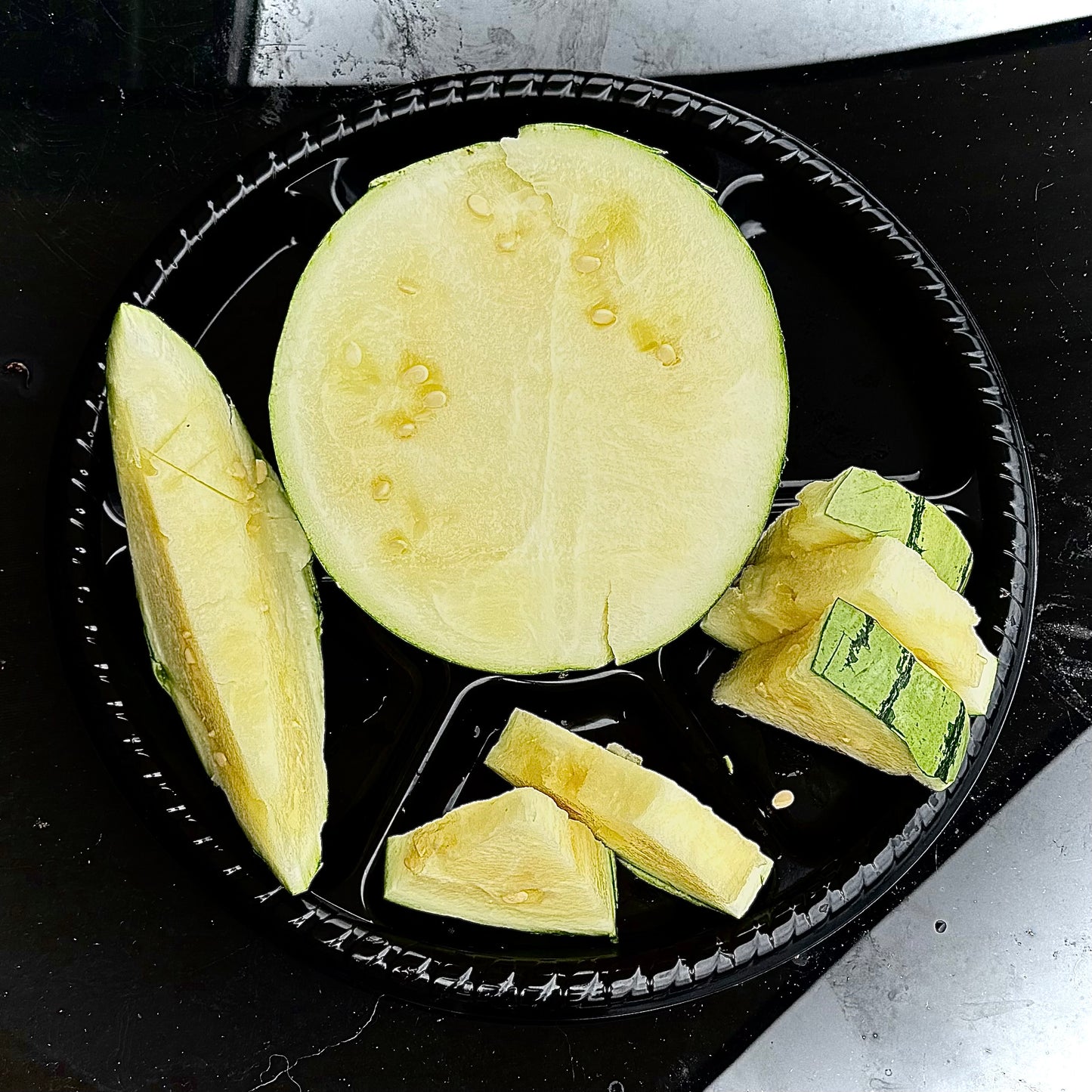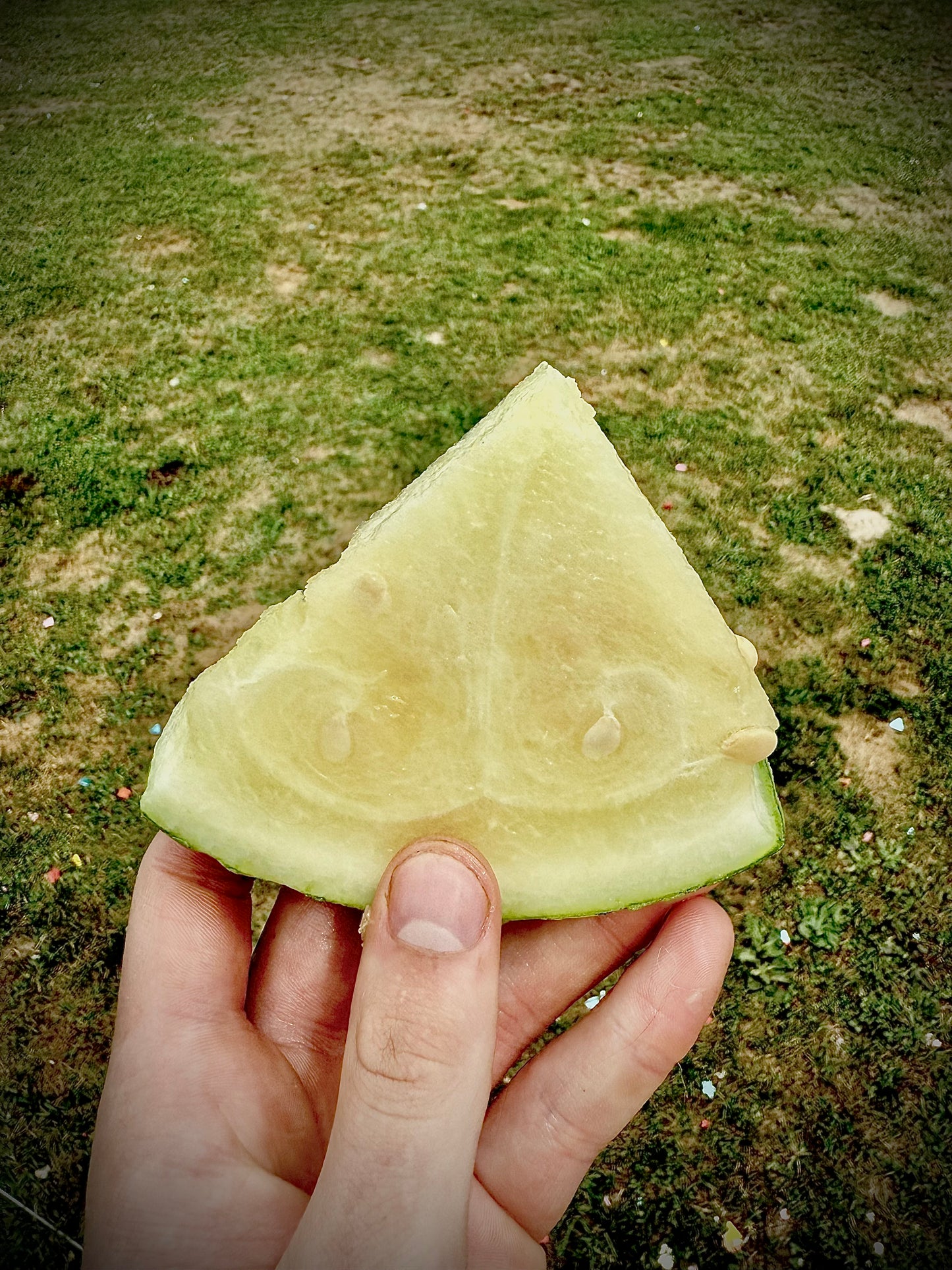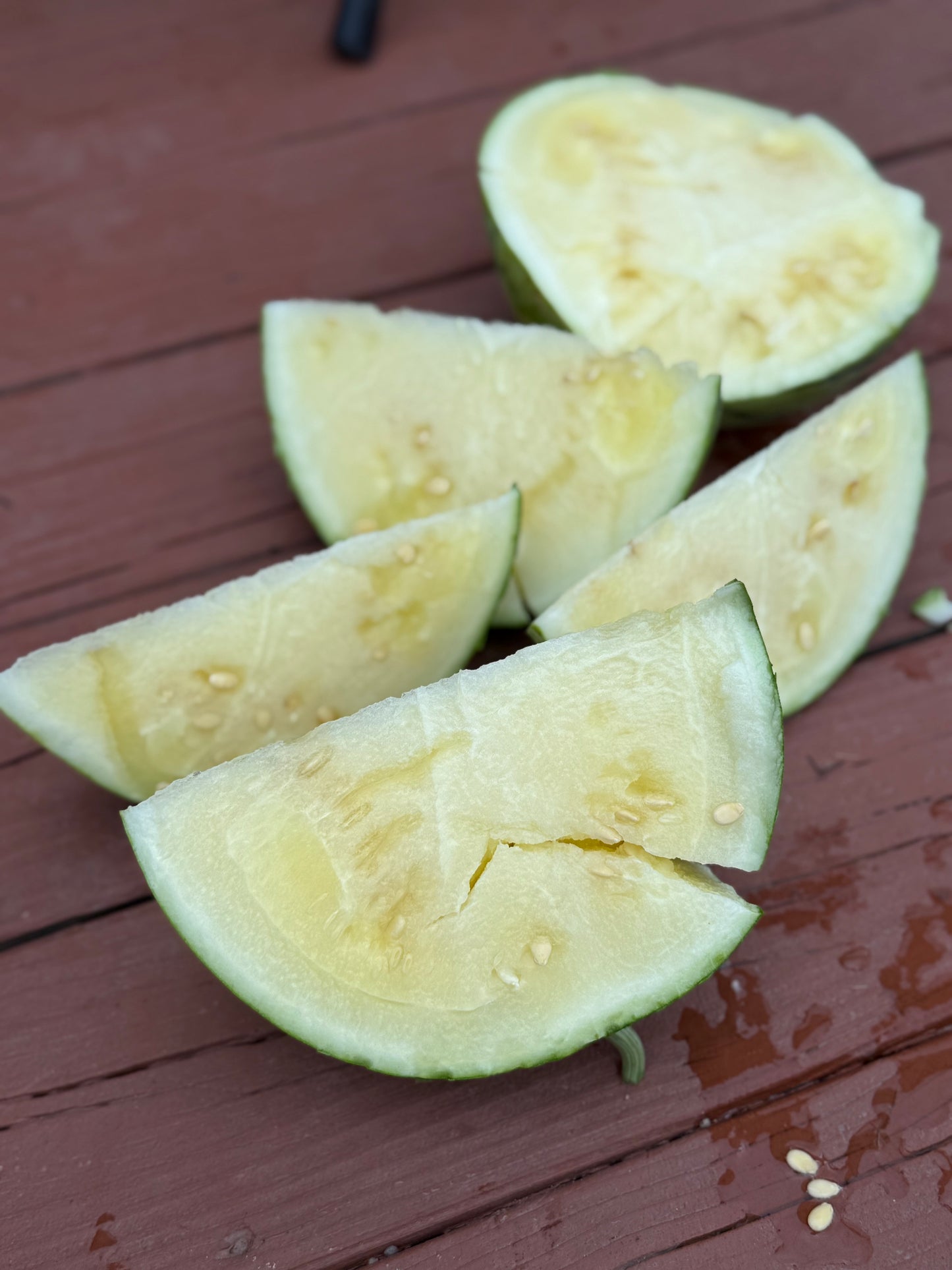Watermelon - Silver Yamato
Watermelon - Silver Yamato
Couldn't load pickup availability
Minimum Seed Count: 10
Silver Yamato Watermelon is a rare heirloom variety from Japan, famous for its striking appearance and sweet flavor. The rind is a pale silvery-green, sometimes with faint stripes, making it stand out from traditional dark green watermelons. Inside, the flesh is crisp, snowy white, and dotted with contrasting black seeds.
Fruits are typically round to slightly oblong and weigh 6–10 lb (3–5 kg). Despite its unusual color, the flavor is sweet and refreshing with hints of citrus and pear, making it a favorite among heirloom collectors. The vines grow vigorously, spreading 10–12 ft, and the variety matures early, producing fruit in a relatively short season.
Because the rind is thinner than commercial melons, the Silver Yamato is best grown for home gardens and local markets rather than shipping—it is delicate and prone to cracking if handled roughly, but the reward is a stunning, unique melon that few have ever tasted!
🌱 Planting Guide:
1️⃣ When to Plant
-
Plant after the last frost when soil temperature is at least 70 °F (21 °C).
-
In cooler climates, you can start seeds indoors 3–4 weeks before the last frost and transplant when nights stay warm.
2️⃣ Soil Preparation
-
Prefers loose, well‑drained, fertile soil with a pH between 6.0–6.8.
-
Mix in compost or well‑rotted manure before planting to boost nutrients.
3️⃣ Seed Sowing
-
Direct Sow: Plant seeds ½–1 inch deep in small hills.
-
Spacing:
-
Hills: 3–4 seeds per hill, spaced 3–4 ft apart.
-
Thin to 2 strongest plants once seedlings emerge.
-
-
Row Planting: Space plants 3 ft apart in rows 5–6 ft apart.
4️⃣ Watering & Care
-
Keep soil consistently moist, especially during flowering and fruiting.
-
Water at the base of the plant, not on the leaves, to prevent disease.
-
Mulch with straw or black plastic to retain moisture and warm the soil.
5️⃣ Fertilizing
-
Start with a balanced fertilizer (e.g., 10‑10‑10).
-
Once vines start running, switch to phosphorus and potassium‑rich fertilizer to support flowers and fruit.
6️⃣ Pollination
-
Bees are the main pollinators. If bee activity is low, hand pollinate by brushing pollen from male flowers to female flowers (those with a tiny melon at the base).
7️⃣ Harvesting
-
Ready about 75–85 days after planting.
-
Signs of ripeness:
-
Tendril nearest the fruit turns brown and dries.
-
Bottom (ground spot) changes from white to creamy yellow.
-
Rind becomes slightly dull and produces a deep, hollow thump when tapped.
-
8️⃣ Extra Tips
-
Rotate melon crops each year to prevent soil-borne diseases.
-
Keep ripening fruit on straw or cardboard to prevent rot.
-
Handle gently—Silver Yamato has a thin rind and can crack easily.
Share







